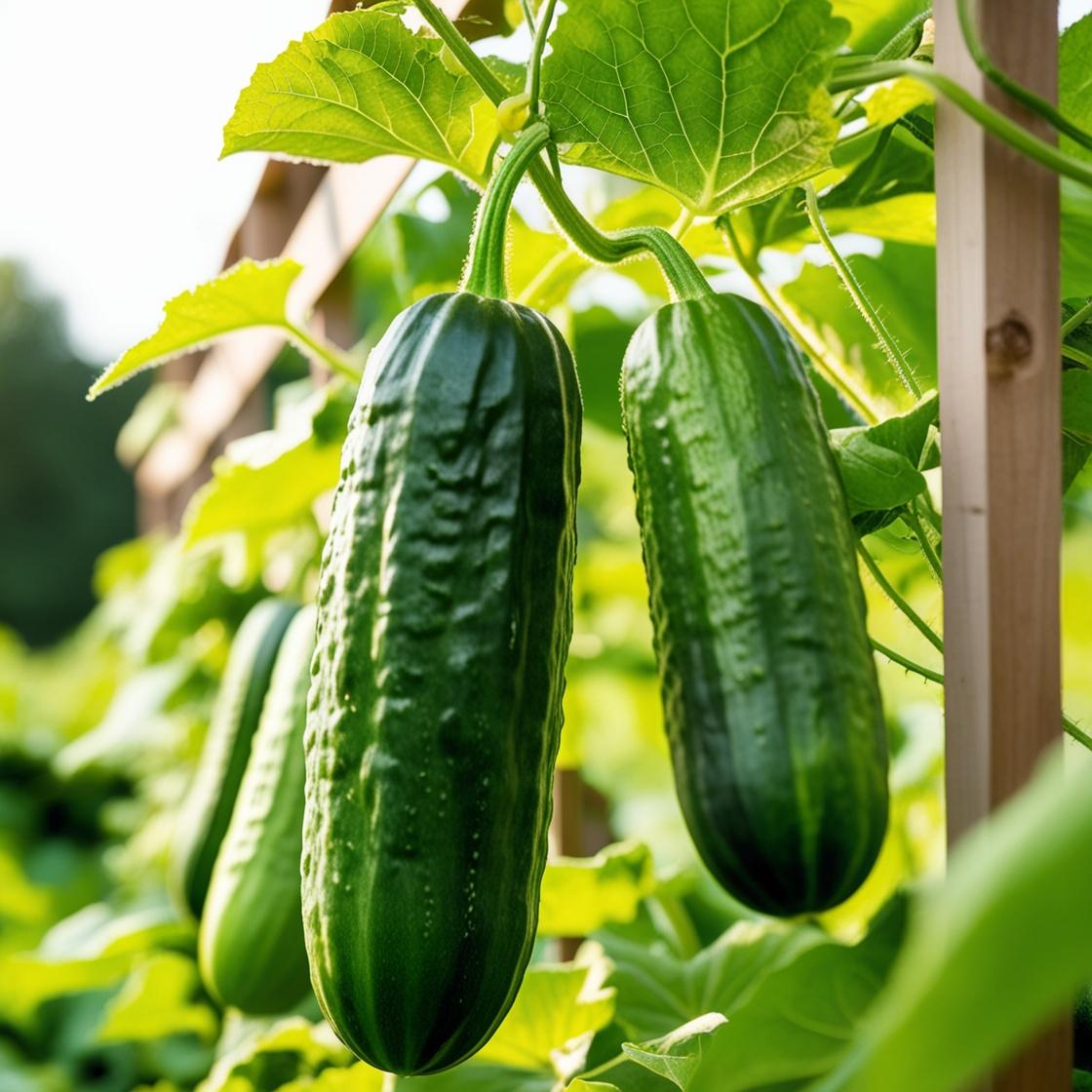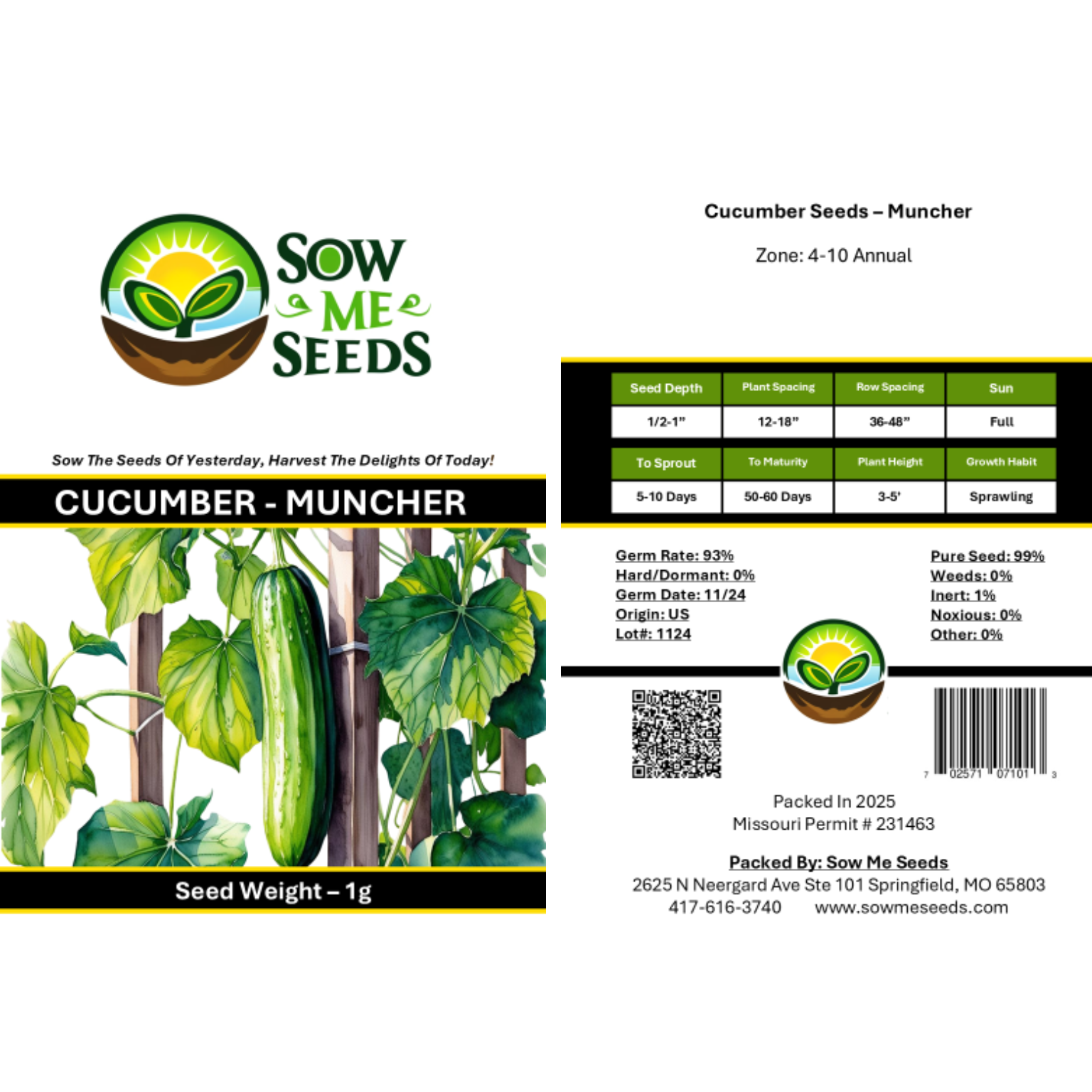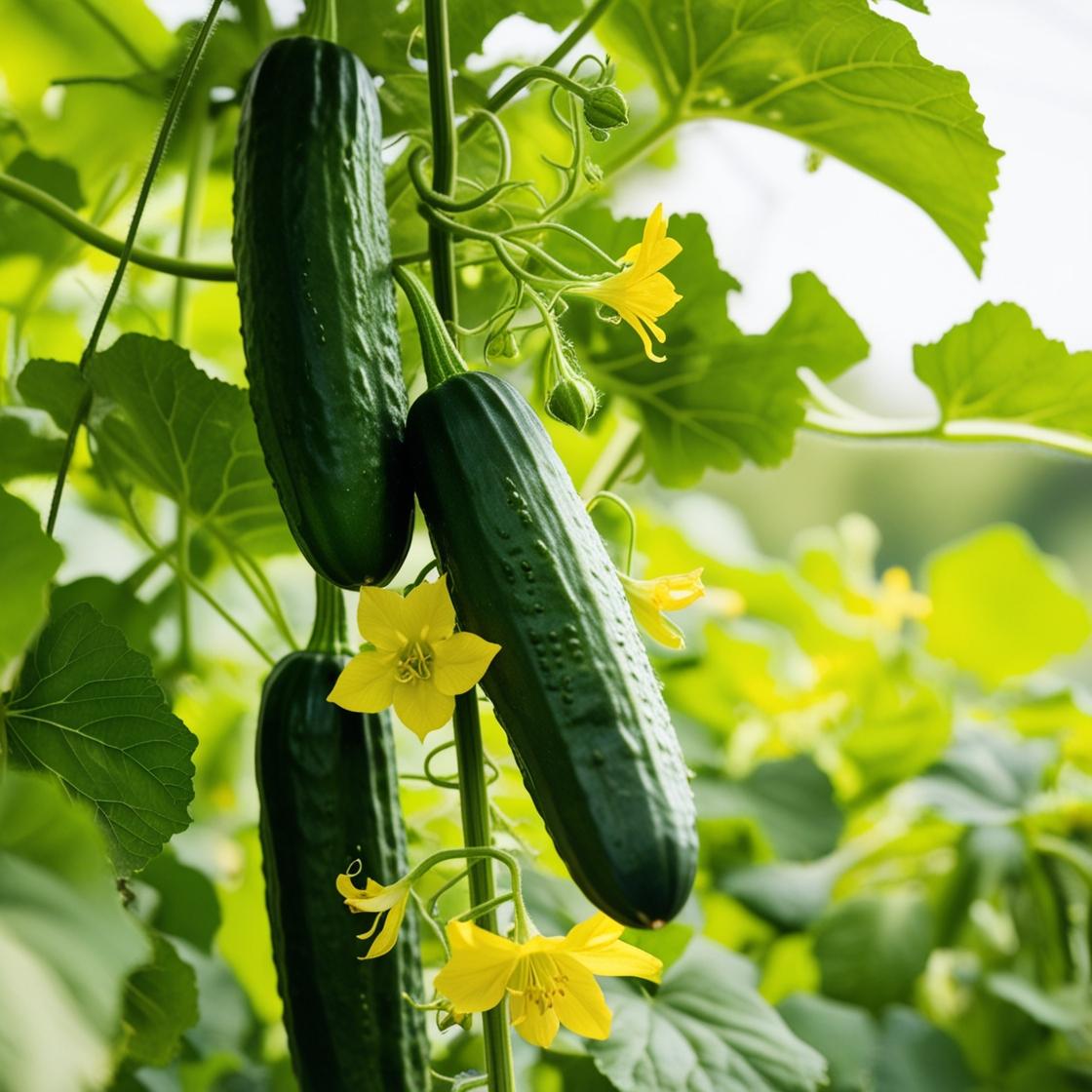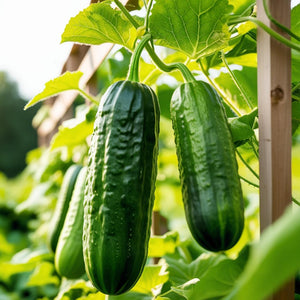- Hardiness Zone: 3-11 Annual
Seed Depth: 1/2–1 inch
Seed Spacing: 12–18 inches
Row Spacing: 36–48 inches
Sunlight: Full sun
Days to Sprout: 5–10 days
Days to Maturity: 50–60 days
Growth Habit: Vining or bush
Sunlight: Requires full sun, with at least 6–8 hours of direct sunlight daily for best growth.
Soil Type: Prefers well-drained, fertile soil with a pH of 6.0–7.0. Enrich soil with compost or organic matter before planting.
When to Plant: Sow seeds directly outdoors after the last frost, when soil temperatures reach at least 70°F.
Direct Sowing: Plant seeds 1/2–1 inch deep, spacing them 12–18 inches apart in rows 36–48 inches apart.
Indoor Sowing: Start seeds indoors 2–3 weeks before the last frost for an early start. Transplant carefully to avoid root disturbance.
Succession Planting: Sow every 2–3 weeks for a continuous harvest during the growing season.
Watering: Water consistently, keeping the soil evenly moist but not waterlogged. Avoid overhead watering to reduce the risk of disease.
Fertilizing: Apply a balanced fertilizer or compost at planting and mid-season to encourage strong growth and fruit production.
Training: Use a trellis to support vines and improve airflow, reducing disease risks and making harvesting easier.
Pest and Disease Control: Monitor for cucumber beetles and powdery mildew. Use organic treatments or row covers as necessary.
When to Harvest: Harvest when cucumbers are 4–6 inches long, firm, and dark green, typically 50–60 days after planting.
How to Harvest: Gently twist or cut cucumbers from the vine to avoid damaging plants. Harvest frequently to encourage continued production.
Seed Collection: Allow a few cucumbers to fully ripen and turn yellow. Scoop out seeds, rinse, and dry thoroughly.
Storing Seeds: Store seeds in an airtight container in a cool, dry place.
Why You’ll Love It
Mild, burpless flavor: Easy to enjoy fresh without bitterness
Smooth skin: Nearly spineless — no peeling needed
Versatile use: Great for pickling or slicing
Compact habit: Ideal for raised beds, containers, and small gardens
Reliable producer: Generous yields with minimal fuss
Plant Characteristics
Appearance: Light green, smooth-skinned fruits
Height: 12–18" tall vines, spreading 3–4 feet
Growth Habit: Compact vines — can grow with or without support
Flavor and Culinary Uses
Flavor Profile: Mild, crisp, and refreshing
Culinary Uses: Enjoy fresh, in salads, or preserved as pickles
Best Dishes: Garden salads, cucumber water, crunchy pickle spears
Companion Planting Tips
Good Companions: Dill, peas, marigolds, nasturtiums
Avoid Planting Near: Potatoes and strong-smelling herbs like sage
Bonus Benefit: Low bitterness makes it perfect for kids and picky eaters
Common Issues and Solutions
Cucumber Beetles: Use row covers and encourage beneficial insects
Bitter Fruit: Water consistently and harvest young
Yellow Leaves: May signal nutrient deficiency — add compost or liquid fertilizer
Powdery Mildew: Improve airflow and avoid overhead watering
Seeds Per Packet
| 1g | Approximately 30 |
| 5g | Approximately 150 |
Why You’ll Love It
Mild, burpless flavor: Easy to enjoy fresh without bitterness
Smooth skin: Nearly spineless — no peeling needed
Versatile use: Great for pickling or slicing
Compact habit: Ideal for raised beds, containers, and small gardens
Reliable producer: Generous yields with minimal fuss
Plant Characteristics
Appearance: Light green, smooth-skinned fruits
Height: 12–18" tall vines, spreading 3–4 feet
Growth Habit: Compact vines — can grow with or without support
Flavor and Culinary Uses
Flavor Profile: Mild, crisp, and refreshing
Culinary Uses: Enjoy fresh, in salads, or preserved as pickles
Best Dishes: Garden salads, cucumber water, crunchy pickle spears
Companion Planting Tips
Good Companions: Dill, peas, marigolds, nasturtiums
Avoid Planting Near: Potatoes and strong-smelling herbs like sage
Bonus Benefit: Low bitterness makes it perfect for kids and picky eaters
Common Issues and Solutions
Cucumber Beetles: Use row covers and encourage beneficial insects
Bitter Fruit: Water consistently and harvest young
Yellow Leaves: May signal nutrient deficiency — add compost or liquid fertilizer
Powdery Mildew: Improve airflow and avoid overhead watering
Seeds Per Packet
| 1g | Approximately 30 |
| 5g | Approximately 150 |





Share and get 15% off!
Simply share this product on one of the following social networks and you will unlock 15% off!